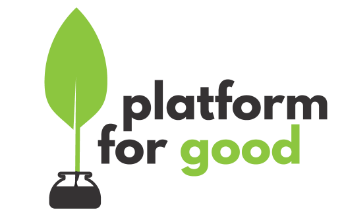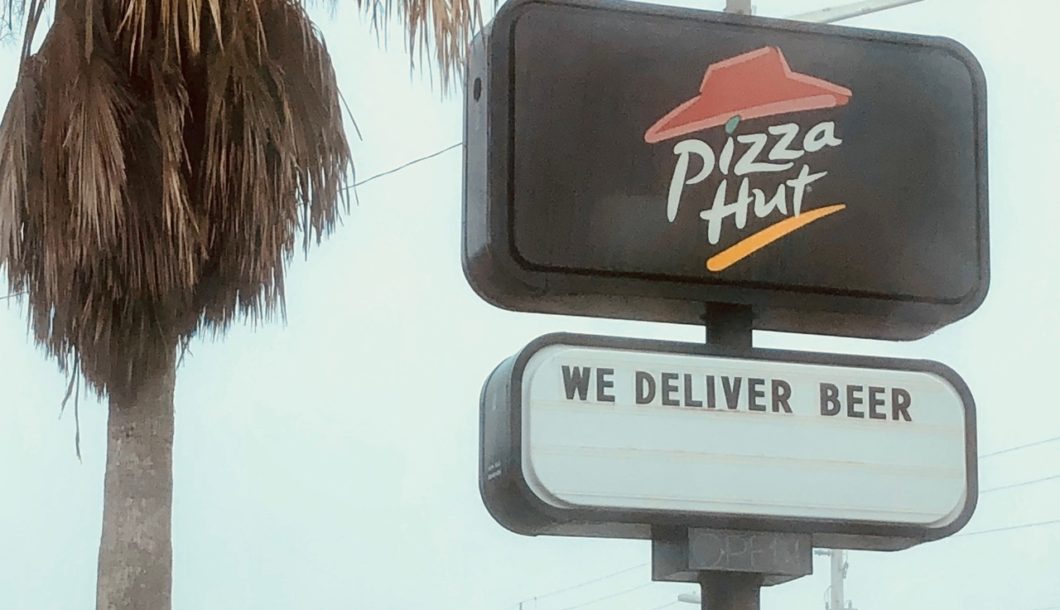Today, as I was driving along A1A in Daytona Beach, Florida, I saw the sign in the image above: a pizza shop declaring “We Deliver Beer.” Imagine someone sitting in their hotel at the beach. They want pizza and they want beer. But they don’t want to deal with making two separate stops. If they go to the closest store to buy the beer, there’s a good chance they’ll just grab a frozen pie at the market. It’s easier, less friction.
This pizza shop was doing something that all business should practice: Frictionless Selling.
Here’s the gist: eliminate things that put drag on a sale. Then repeat every six months. Make the sales process frictionless.
I remember reading a story of how UPS washes its planes more often than any other carrier. They found that even a minor film of dirt on the fuselage of the plane created drag (friction), which increased their fuel costs. They calculated the ROI on plane washing. In a search for that original article I found this updated example where Emirates uses a new dry wash technique that allows their planes to “fly clean” and save substantial amounts of fuel and over 11,300 liters of water to clean each Airbus A380 aircraft. How cool is that? They save money, save water, and lower their impact on the planet by removing friction from their operation.
Your work and your company is the same. There are tiny little bits of dust and debris that build up on your processes that ultimately slow down your sales.
Here’s another example: I was at the bookstore the other day waiting in line to purchase a few books. I do that about every week—just wander around and enjoy being close to so many books. But this day the line was moving slower than usual. The company had a new survey they were doing and the software was confusing to the bookseller. I looked at the folks in front of me, the frustrated and confused employee, and decided to leave. I wanted the books, but I didn’t have time for the process. Friction.
Sticking with the book theme, think of “One Click” from Amazon. They developed a method that literally allows you to look at a product, click it, and it arrives at your house two days later. Most websites and companies develop strategies to do just the opposite. They all want to keep people on their website longer. Amazon went the other direction. And yet people use Amazon more than any other retailer. Why? Because there is no friction. We can get on and off and we know it. Therefore we use it more.
In my career in enterprise software, the friction came from an ever-growing set of steps for approval of deals, approval of pricing, legal reviews, project scoping calls, timeline commitments, and on and on. We had to constantly review our deal processes and consolidate steps, speed up approvals, and tune the engine.
We also had to constantly talk to our sales teams about the very important need for our company to understand each new customer, the commitments we were making, the liability associated with legal contracts, and of course the economics of each arrangement. Nobody wins when a company over promises and under delivers. Nobody wins when your company loses money on a client. So the steps are critical and necessary.
My key learning came when I finally understood that there is an ongoing need to pause, evaluate the process, and remove friction. It was like washing the plane of our sales process. I found that once a year was not enough. Every few months was too often and frustrated people. Every six months was about ideal.
Part of removing the friction comes from leading a continuous conversation between sales, finance, legal, implementation, and engineering. When you get those folks in a room and list all of the approval steps on a whiteboard, it’s obvious to everyone that simplification is necessary. I’ve found that people love to help simplify and speed things up. I’ve also found that sales people love it when other teams help shape customer expectations.
From time to time I’d hire a senior sales rep or operations person and they’d come in and hear this term: Frictionless Selling. They’d groan or make little jabs, like it was a fantasy or some naive thought that was unattainable. They needed to be wooed. Don’t be offended when people don’t buy into your ideas. Get to work communicating why you designed things the way you did, what experiences went into it. And keep in mind that you have something to learn yourself, so listen to their ideas and experiences. The goal is not to be right; the goal is to make gaining a new customer and a new sale quick and easy.
There are so many reasons why a customer may not purchase from your company. However, the selling process should not be one of them. You should, and can—and even must—constantly work to simplify the process.
This concept applies to every aspect of a company. Everyone is in sales. Everyone has a role that involves convincing others to make decisions. Make it easy and enjoyable for people to say yes to your ideas.
Be aware of the small items that build up around your sales processes. They will always be with you. Like a film of dirt on an airplane, it is the natural result of your company being out in the marketplace. Don’t be disheartened by it.
Bring people together to understand how a customer becomes a customer. Fall in love with that wonderful event. Ring a bell. Make a ceremony of it. Celebrate it. And let everyone know they play a vital role in every new win. Challenge them to make their part frictionless. To make their part fun and engaging. They are all important. Make them feel that way.

